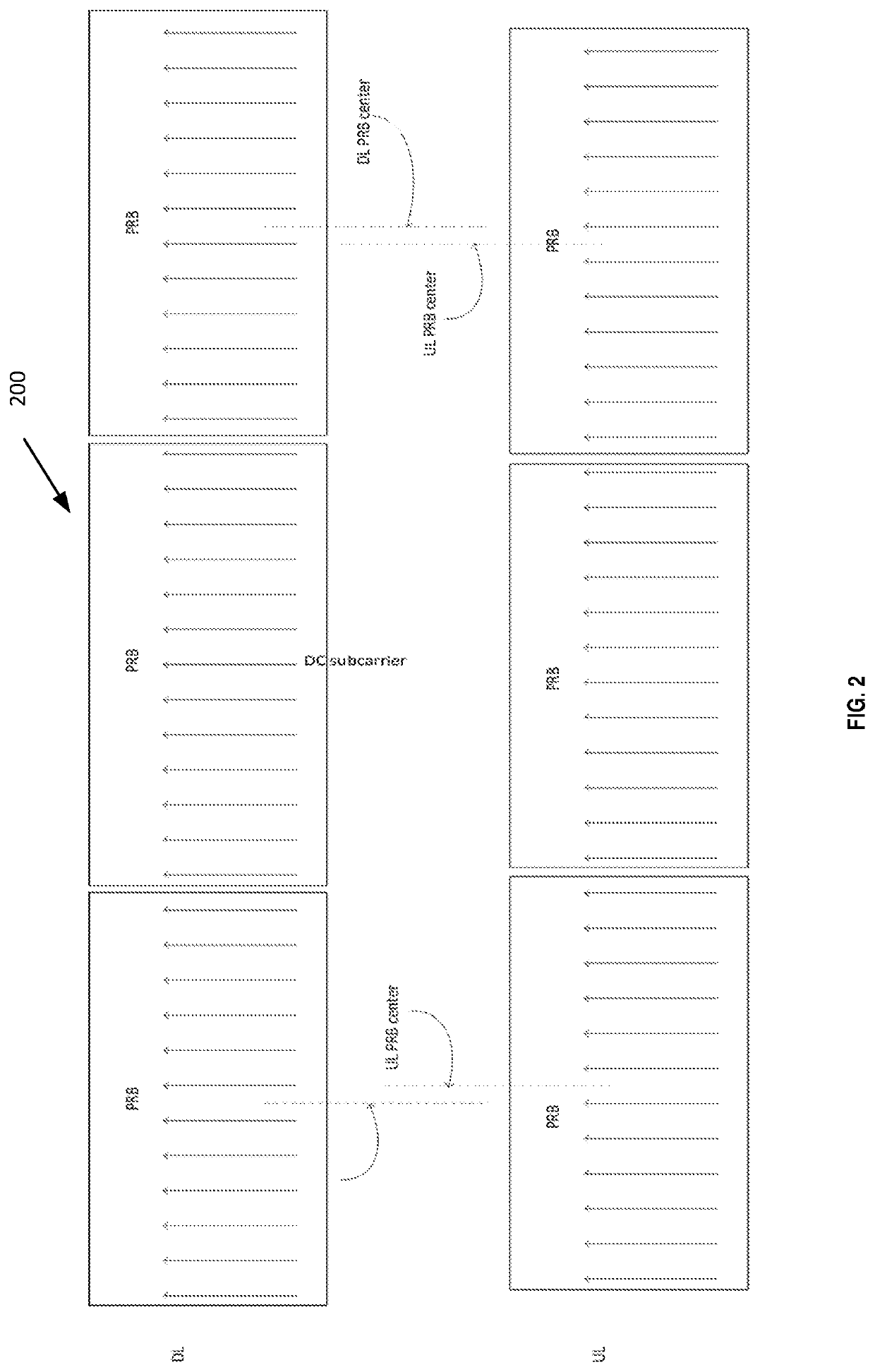Methods and apparatuses for signalling a frequency offset in a nb-iot TDD network
- Summary
- Abstract
- Description
- Claims
- Application Information
AI Technical Summary
Benefits of technology
Problems solved by technology
Method used
Image
Examples
example implementations
[0054, in accordance with an embodiment, of the WD 22, network node 16 and host computer 24 discussed in the preceding paragraphs will now be described with reference to FIG. 4. In a communication system 10, a host computer 24 comprises hardware (HW) 38 including a communication interface 40 configured to set up and maintain a wired or wireless connection with an interface of a different communication device of the communication system 10. The host computer 24 further comprises processing circuitry 42, which may have storage and / or processing capabilities. The processing circuitry 42 may include a processor 44 and memory 46. In particular, in addition to or instead of a processor such, as a central processing unit, and memory, the processing circuitry 42 may comprise integrated circuitry for processing and / or control, e.g., one or more processors and / or processor cores and / or FPGAs (Field Programmable Gate Array) and / or ASICs (Application Specific Integrated Circuitry) adapted to ex...
first embodiment
[0092]According to the present disclosure, a NB-IoT TDD device can determine the DL-to-UL frequency shift from the raster offset information provided in MIB-NB. Observe in FIG. 2 that, the UL PRB center is 7.5 kHz lower than the DL PRB center when the PRB is above the DC subcarriers, i.e. the subcarrier frequencies in the PRB are higher than that of the DC subcarrier. On the other hand, the UL PRB center is 7.5 kHz higher than the DL PRB center when the PRB is below the DC subcarriers, i.e. the subcarrier frequencies in the PRB are lower than that of the DC subcarrier. Thus, whether the DL-to-UL frequency shift is 7.5 kHz or −7.5 kHz depends on whether the NB-IoT PRB is below or above the DC subcarrier.
[0093]For LTE carrier bandwidth of 10 or 20 MHz, the raster offset is −2.5 kHz if the NB-IoT anchor is above the DC subcarrier, and 2.5 kHz if the NB-IoT anchor is below the DC subcarrier. For LTE carrier bandwidth of 3, 5, and 15 MHz, the raster offset is 7.5 kHz if the NB-IoT anchor...
second embodiment
[0095]In a second embodiment, a method for supporting NB-IoT TDD deployed in an NR carrier is provided. In this case, the NB-IoT carrier is configured to operate in one of the stand-alone and guard-band modes with the DL-to-UL frequency shift being 0 kHz as NR doesn't have DC subcarrier. According to this embodiment, MIB-NB (or any other system information message) further optionally includes the frequency raster offset that is configured when a NB-IoT carrier is operating within an NR carrier. Note that in Rel-13 NB-IoT FDD, raster offset is provided only for in-band and guard-band operation mode.
PUM
 Login to View More
Login to View More Abstract
Description
Claims
Application Information
 Login to View More
Login to View More - R&D
- Intellectual Property
- Life Sciences
- Materials
- Tech Scout
- Unparalleled Data Quality
- Higher Quality Content
- 60% Fewer Hallucinations
Browse by: Latest US Patents, China's latest patents, Technical Efficacy Thesaurus, Application Domain, Technology Topic, Popular Technical Reports.
© 2025 PatSnap. All rights reserved.Legal|Privacy policy|Modern Slavery Act Transparency Statement|Sitemap|About US| Contact US: help@patsnap.com



